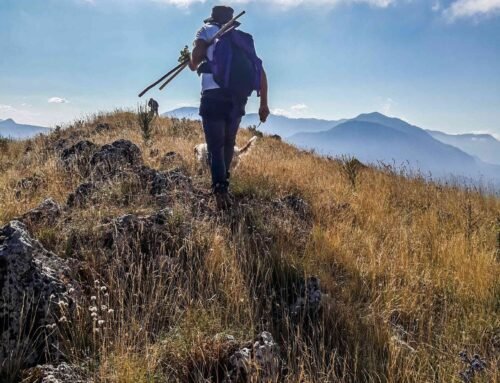ARTISTIC TEMPLE OF SAINT LAWRENCE
Informations
In this place, in the second half of the fourteenth century, the Bishop of Caposele, Francesco Tonzo, a conventual minor, built a convent for friars with an attached church dedicated to St. Francis. Suppressed in the early nineteenth century, the convent was repurposed for civic uses while the church remained open for worship, cared for by the clergy. After the earthquake of 1853, which destroyed the ancient mother church in the Ponte area, the Franciscan church, equipped with a massive bell tower and suitably transformed, became, until November 23, 1980, the date of its destruction due to the earthquake, the main temple of Caposele, dedicated to the Patron Saint Lorenzo Martire.
The current temple, built on the ruins of the previous one, stands out for its unique architectural lines, making it one of the most beautiful in Italy. Designed by architect Vittorio Gigliotti in 1986, the church’s project won first prize at the International Architecture Exhibition in New York in 1988. It stems from a fortunate interpretation of the passage from the prophet Ezekiel (Ez. 47, 1-23), which narrates the vision of water flowing from the Temple of Jerusalem, healing and giving life. Just as the refreshing waters of the Sele provide vital nourishment to the otherwise parched lands of Puglia, so the grace of the Spirit, according to the architect’s intention, flows from this church and grants the life promised by the Savior.
Thus, water becomes the element that inspires the church. Indeed, upon entering, one cannot help but be struck by the voluminous vortices of the ceiling, evoking the roaring whirl of water. The same sinuous shapes of the supporting walls, with their recesses and protrusions, give rise to the side chapels that house the statues of the saints dear to the devotion of Caposele, reflecting the flow of water. The liturgical hall indeed resembles a single great river that, with the altar as its focal point and source, flows, shaping itself in a perfect blend of form, color, and light.
The church is also enhanced by the works of the Bergamasque artist Mario Toffetti, known as “the artist of the Popes,” who is also the author of the bronze doors of the Patriarchal Basilica of Santa Maria Maggiore and the baptistery of the Sistine Chapel in Rome. In the center of the church’s apse rises, with its delicacy and lightness, the exquisite altar whose soft shapes evoke the waves of water on which the Eucharistic table seems to float. On the front of the altar is depicted the evangelical scene of Jesus’ encounter with the Samaritan woman at the well. At the foot of the altar, in a designated space, is housed a revered relic of St. Gerardo Maiella, who died here in Caposele, at the convent of Materdomini, in 1755.
The ambon is also inspired by water and features a scene representing the descent of the Holy Spirit upon the Apostles gathered in prayer in the Cenacle, in its upward thrust towards the liturgical hall. Behind the elegant stone presbytery stands, majestic, in a whirl of voluminous bronze forms, the figure of the crucified and risen Christ, with a tall and slender cross towering behind him. The Redeemer is depicted with arms raised towards Heaven, in a hieratic posture of suggestive beauty. To the left upon entering, the Baptistery is also noteworthy, adorned with a scene representing the Baptism of Jesus in the waters of the Jordan River by John the Baptist.
At the back, to the right of the altar, one can admire a relic from the ancient mother church, consisting of a side altar that survived the fury of the earthquake in 1980, currently used for the custody of the Blessed Sacrament. Notable is the ciborium from the seventeenth century, made of polychrome marbles. The space is perfectly embedded within the plastic structure of the temple, where the new and the old contribute to creating a suggestive environment for contemplation and prayer.
Finally, the church houses some of the images of the saints that have always been venerated here in Caposele. Saved from the fury of the earthquake, the statues of San Rocco, Santa Lucia, and the Madonna delle Grazie all date back to the eighteenth century, except for the statue-reliquary of the patron saint San Lorenzo, which is presumably from the seventeenth century. This last statue stands out among the others for its remarkable craftsmanship. The Saint, depicted to the waist, is shown in a contemplative posture. The delicacy of the drapery and the beauty of the face make it one of the most beautiful representations of him in Italy.
Notably, at the base of the statue is the ancient coat of arms of the Municipality of Caposele, in use since the seventeenth century, depicting three mountains with three stars and a dragon spewing water. This is a sign of the high regard that the ancient residents of Caposele had for this element, a wealth and resource of the area, which has led some to describe Caposele as a true “city of springs.








